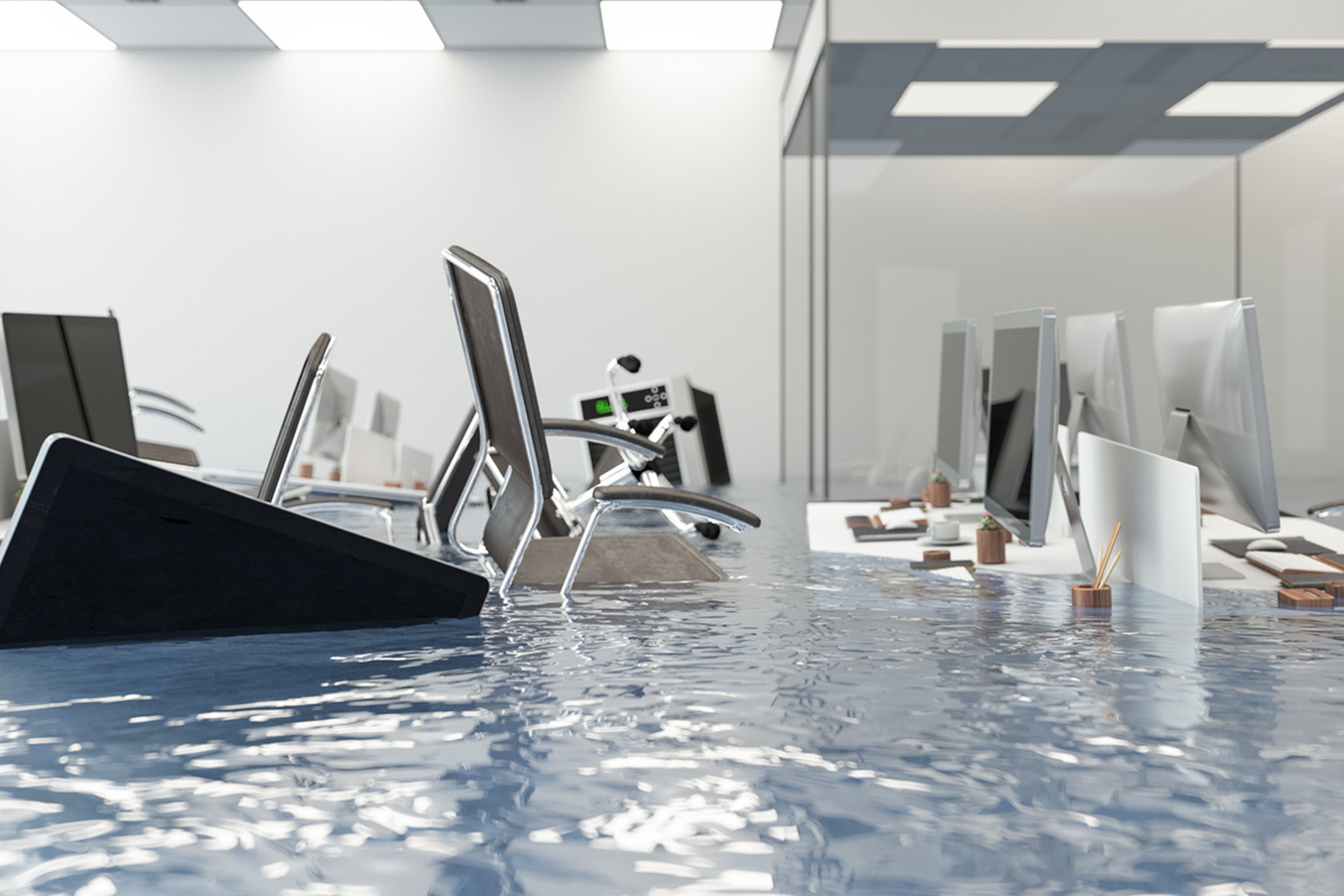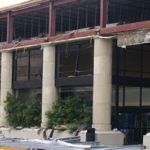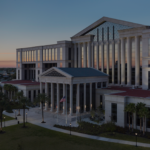About water damage claims
Each year public entities and businesses spend billions of dollars trying to recover from losses caused by water damage. Even small leaks can lead to costly damages, and leakages can happen at any time of year. Here’s how to make sure your public entity organization doesn’t become one of those figures.
Types of water
Water damage is frequently caused by the following sources: natural water, grey water, or service water. It is important to make provisions for all kinds of water sources by prevention through regular maintenance and inspection.
Natural water such as rain, can frequently enter a building through the roof, either through faulty design or poor maintenance. Design flaws or neglected areas that require maintenance can form areas where water can collect and pool, resulting in seepage and roof leaks over time, especially during periods of persistent precipitation. If the gutter system has been neglected, any blockages can cause water to back up and overflow, escaping back into the building. And even the best designed or well-maintained roofs can fail under the rigors of intense storms or severe seasonal weather patterns.
Grey water is water runoff from appliances such as baths, sinks, washing machines, dishwashers and other kitchen appliances. Most commercial buildings contain systems that handle grey water. The more sophisticated a system, the greater potential for error or failure if not installed or maintained properly. Additionally, since these systems are not usually in constant use, they tend to present intermittent leaks when there is a failure, which can slowly build up over time and be more difficult to detect.
Service water often exists to make large volumes of water readily available for various service functions, like fire suppression systems. Any leaks in these systems can cause swift and severe water loss, especially if the affected system is located on the roof, or in the top floor of a multi-story building. Other potential issues include:
- The feed sources of municipal water supplies require proper maintenance.
- If there is a loss of water, faucets and other access points can accidentally be left in the open position.
- Some water supplies contain minerals that are corrosive to equipment over time.
Vulnerable buildings
Some factors make a building more susceptible to water damage:
Age Buildings that are over 20 years old generally tend to have a higher risk of water damage, due to the wear and tear it has experienced in both its internal and external infrastructure. Older piping and water systems are also more prone to failure.
Materials Sometimes younger buildings can also experience this risk, especially if they were built with more modern or experimental materials. Traditional materials have been tested by time and are often installed to certain standards that may not be in existence for newer kinds of materials. Newer materials may also be at higher risk for certain types of damage that traditional best practices haven’t been able to consider.
Architecture In a high-rise with multiple floors and units, such as an apartment complex, each unit has its own water systems, introducing many more areas of potential leakage or system failure. If even one unit’s water system should fail, the damage will not necessarily remain localized to that unit but is very capable of spreading and damaging many other units, compounding damages.
Weather and region The area in which a building resides can also be a factor because different regions subject buildings to different kinds of weathering, and in some case, either seasonal extremes or geographical risks must be taken into extra consideration to prevent damage. This is true in Florida as proximity to the coast can be a factor.
Maintenance Buildings that have had their regular roof or HVAC maintenance (such as roof, plumbing or HVAC) deferred face greater risks of loss through water damage also. While maintenance deferrals are sometimes inevitable, efforts should be made to provide the required maintenance as soon as reasonably possible. There is no better defense against preventable claims than a commitment to disciplined building maintenance.
Water damage mitigation programs
Now that many of the potential scenarios and causes of loss have been discussed, it’s time to think about what to do to prevent and mitigate water damages. If not considered well in advance, it can be hard to cope with and mitigate a water damage event once it has occurred. Developing a mitigation program takes into account a specific building’s structure, weak points and the organization’s preferred methods of clean up and restoration. Additionally, each building (including unoccupied buildings) should have its own set of regularly performed checklists to ensure that systems are frequently inspected for potential wear and damage. Each building will have its own unique needs, but some sample checklist items could include:
- Provisions are in place to repair small leaks promptly
- All leaks are analyzed to determine if it is a fluke or a system failure
- Housekeeping staff are trained to notify maintenance personnel promptly when certain damage is found (leaks, drips, clogged drains, etc.)
- Work on water systems performed by contractors is monitored and inspected
- Liquid storage tanks and vessels are regularly inspected and procedures are in place to mitigate leaks and failures
- Pipe diagrams are current and show all valves for all water systems
- Shut off valves are exercised at least annually by being closed, opened and lubricated, if necessary, to be sure they can be closed easily during a water damage event
- Protocol is in place to have someone available on all shifts who is trained to respond immediately to any leak
- Protocol is in place to have someone available 24/7 with authorization to call approved professional restoration services
In addition, making the following suggestions part of your building’s procedures is an excellent way to mitigate risk:
- Make sure your critical equipment or materials (such as valuable papers) are placed or stored in such a way as to protect them in case of a water damage event
- Inspect roof, flashing, drains, downspouts, and roof mounted equipment at least twice a year, and especially after major weather events.
- Create a systematic maintenance schedule to avoid excessive wear and tear on systems (and to identify any potential system failures before they cause damage)
- Supervise new construction or renovations to be sure that current water systems are not compromised and that your policies and procedures remain sufficient
Above all, be sure your water damage mitigation plan addresses all four following items:
Prevention: What your organization does to prevent water damage from occurring, such as checklists, procedures, inspections, staff training, etc.
Preparedness: Steps your organization has taken to be sure they are ready to respond if a water damage claim does occur: identifying and maintaining water shut off points, having clean up supplies accessible, etc.
Response: How your employees are trained to respond to a water damage incident such as notification procedures, damage mitigation, clean up priorities, etc.
Recovery: Steps for documenting damage, response efforts, and working with restoration companies and insurance carriers to ensure your organization can reestablish operations as soon as possible.
For additional ideas or risk management advice for developing water damage mitigation plans, contact your Preferred Loss Control Consultant.
This article was originally published on the Arrowhead Tribal blog. It is used with permission and has been modified and updated to better fit the needs of our preferred members.
Information obtained from Zurich Insurance Group.







